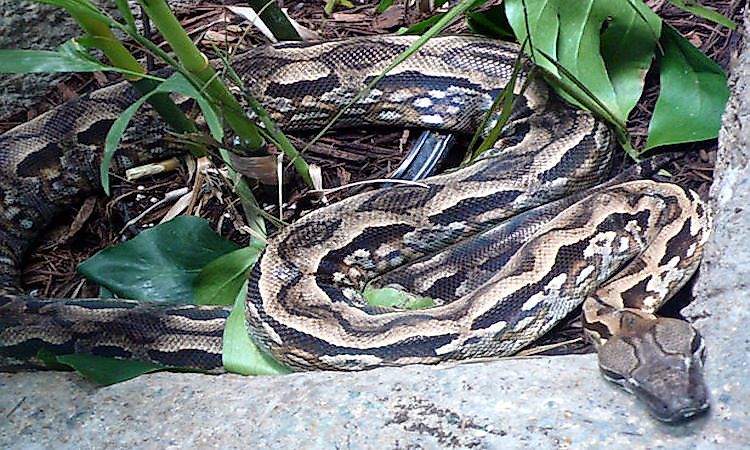Reptiles Of Madagascar

The Reptiles Of Madagascar
Madagascar’s wildlife composition is an indication that the island has existed in isolation for over 85 million years. The country is estimated to have split from India about 88 years ago leading to plants and animals on the island evolving in isolation. Thus, Madagascar is home to unique plants and animals that cannot be found anywhere else in the world. Most of the plants and animals found on the Island of Madagascar are endemic including birds, amphibians, mammals and reptiles. The reptiles of Madagascar comprise of a number of species of crocodiles, chameleon, tortoise, and ferocious predators. These predators include;
Malagasy Ground Boa
Malagasy Ground Boa, scientifically called Acrantophis madagascariensis and a member of the Boidae family, is a species of snake endemic to the Island of Madagascar. Boa is the longest snake in Madagascar with the adult female measuring up to 10 feet while the male measures 8 feet in length. The snake has diamond-like marks on its back with pale reddish-brown to gray color patterns. The male Boa has vestigial hind limbs or claws, differentiating it from the female. Malagasy Ground Boa lives in sparse open woodlands of Madagascar and takes shelter in debris, barrows, and fallen trees. The female can copulate with more than one male and gives birth to 4-5 young ones. The snake hunts by coiling around its prey and suffocates it to death then swallows it whole. The threats facing Malagasy Ground Boa include deforestation, illegal pet trade, and human population growth.
Radiated Tortoise
Radiated tortoise, Astrochelys radiate, belongs to the family Testudinidae of tortoises. The tortoise has a life span of up to 188 years and is classified as Critically Endangered by the IUCN due to the major destruction of its habitat. Radiated tortoise grows to an average length of 40 cm and a weight of 16 kilograms. The tortoise has the natural tortoise body with the carapace marked with yellow lines while the head, legs, and feet are also colored yellow. Radiated Tortoise is found in the southern part of Madagascar and several other islands including the Island of Reunion. The tortoise species is mainly herbivorous with its diet comprising of grazing, fruits, and succulent plants. During mating, the male mounts the female while hissing and grunting. The male lays 3 to 12 eggs that hatch between six to eight months.
Madagascan Big-Headed Turtle
Madagascan Big-Headed Turtle, Erymnochelys madagascariensis, is endemic to the lakes and rivers of the western Madagascar. They live mostly in freshwaters like slow streaming rivers and still lakes. These turtles are highly endangered because they are considered a delicacy with high demand from Asia. Madagascan Big-Headed Turtle has a dark brown shell which encloses the other body parts. The head is very big just as the name suggest. Apart from being hunted for food, clearing land for development is also a major threat to Madagascan Big-Headed Turtle.
Sofia Mermaid Skink
Sofia Mermaid Skink, Sirenoscincus mobydick, is a lizard in the family Scincidae and is endemic to Madagascar’s area of Sofia Region. The lizard has only forelimbs which are shaped like flippers. Its snout-vent length measures 70 mm while the body is about 4 mm wide. The body is pale with the eye appearing as a black spot. Sofia Mermaid Skink lives slightly under the sand, under a rock, on leaf litter, and on dead wood.
The Reptiles Of Madagascar
| Reptiles of Madagascar | Scientific Name |
|---|---|
| Malagasy Ground Boa | Acrantophis madagascariensis |
| Radiated Tortoise | Astrochelys radiata |
| Madagascan Big-Headed Turtle | Erymnochelys madagascariensis |
| Sofia Mermaid Skink | Sirenoscincus mobydick |
| Malagasy Leaf-Nosed Snake | Langaha madagascariensis |
| Rainbow Agama | Agama agama |
| Dwarf Chameleon | Brookesia exarmata |
| Peters' Spotted Gecko | Geckolepis maculata |
| Madagascar spotted piny-tailed iguana | Oplurus quadrimaculatus |
| Nile Crocodile | Crocodylus niloticus |











